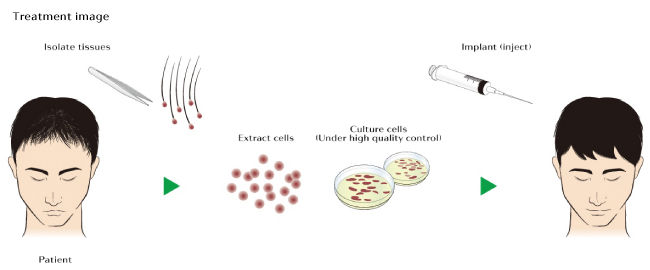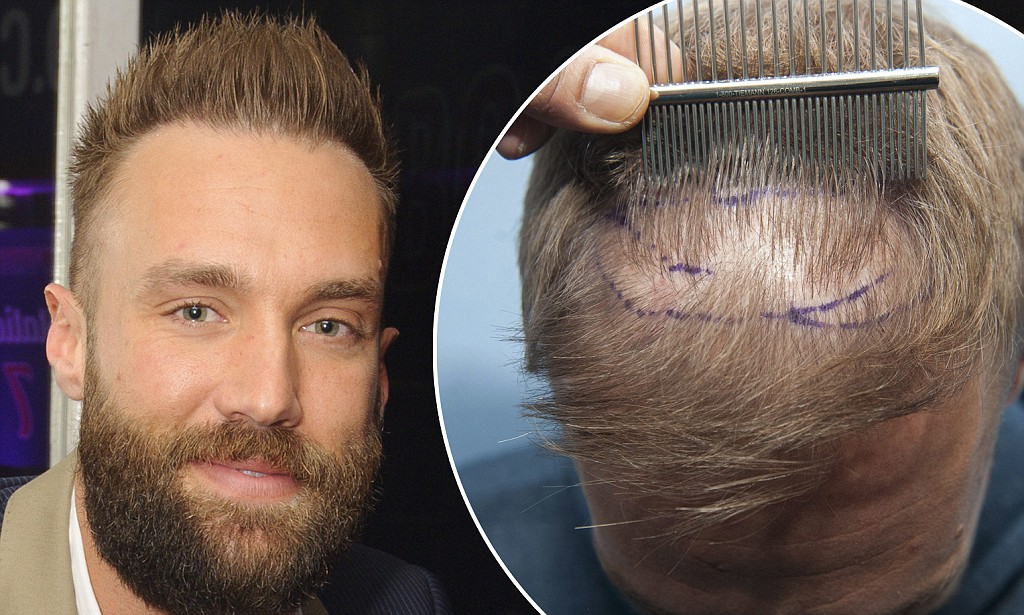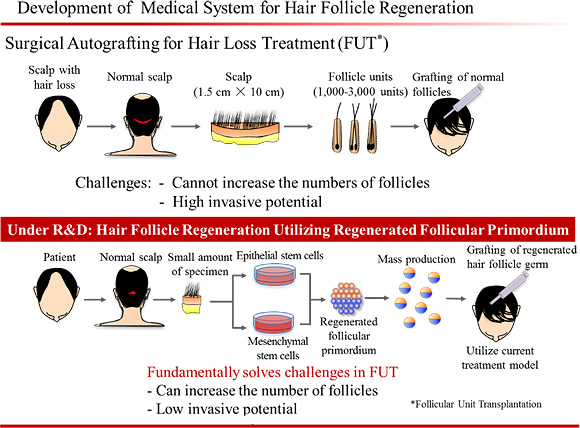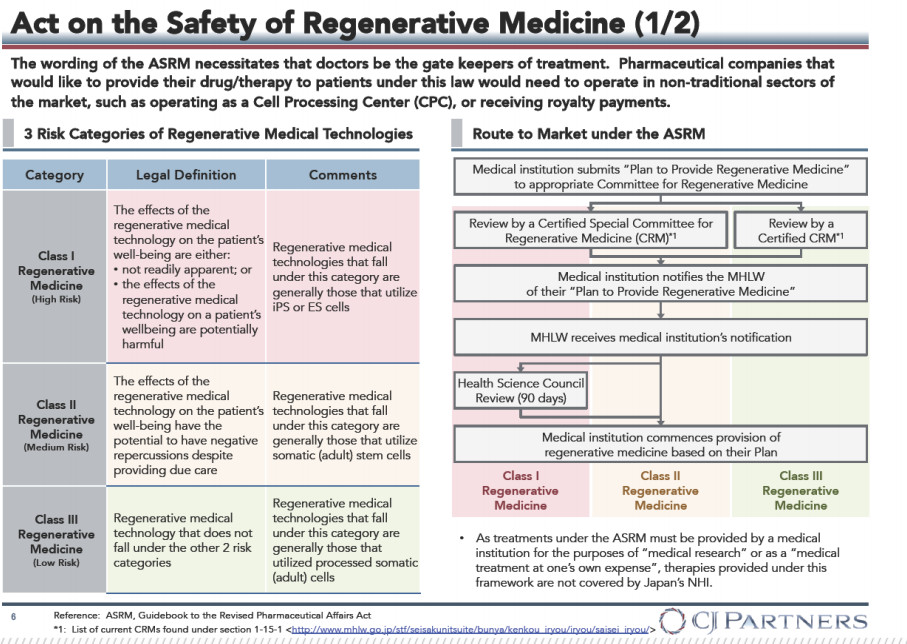Kyocera's release date of 2020 seems too optimistic. The reaserchers at Riken think it will take 5-10 years, i trust them much more than Kyocera.
Riken have only been testing on slick bald lab rats. We have no idea how smoothly this technology will translate to humans; how will diffuse thinners react vs slick bald patients? will hairs grow out in uniform directions and naturally form a good looking crown/hairline, or will they grow out in random directions? These questions are unanswered and could take another decade to figure out.
If Riken can reliably produce the new cells, then 95% of the science is done. As this is not some kind of chemical solution there is no fundamental difference between implanting in rats and humans as you are using the patients own genetic material. The next big step is creating the industrial machinery that will take the cells extracted from biopsy, cultivate them and then combine them to create the new individual germs in an automated manner. Three years is a realistic time frame from Kyoceras point of view for their part of the partnership.
The issue about slick bald vs diffuse is more of an issue with something like Replicel that works by reinforcing existing follicles with new DP cells. These are new follicle cells so will need to be injected in the same manner as a hair transplant with a doctor planting the cells in-between existing hairs. Unfortunately if you have good density but thin hair then I cant see how this will help, Replicel may be a better solution in these cases.
There is also no need to be concerned about hairs growing in the wrong direction, this is not a hair implant so there is no follicle as such, just a bunch of cells that will develop into a follicle. Like a planting a seed it does not matter which way you plant it they always grow upwards, the implanted cells should develop the way a new hair develops at birth.
Last edited:




